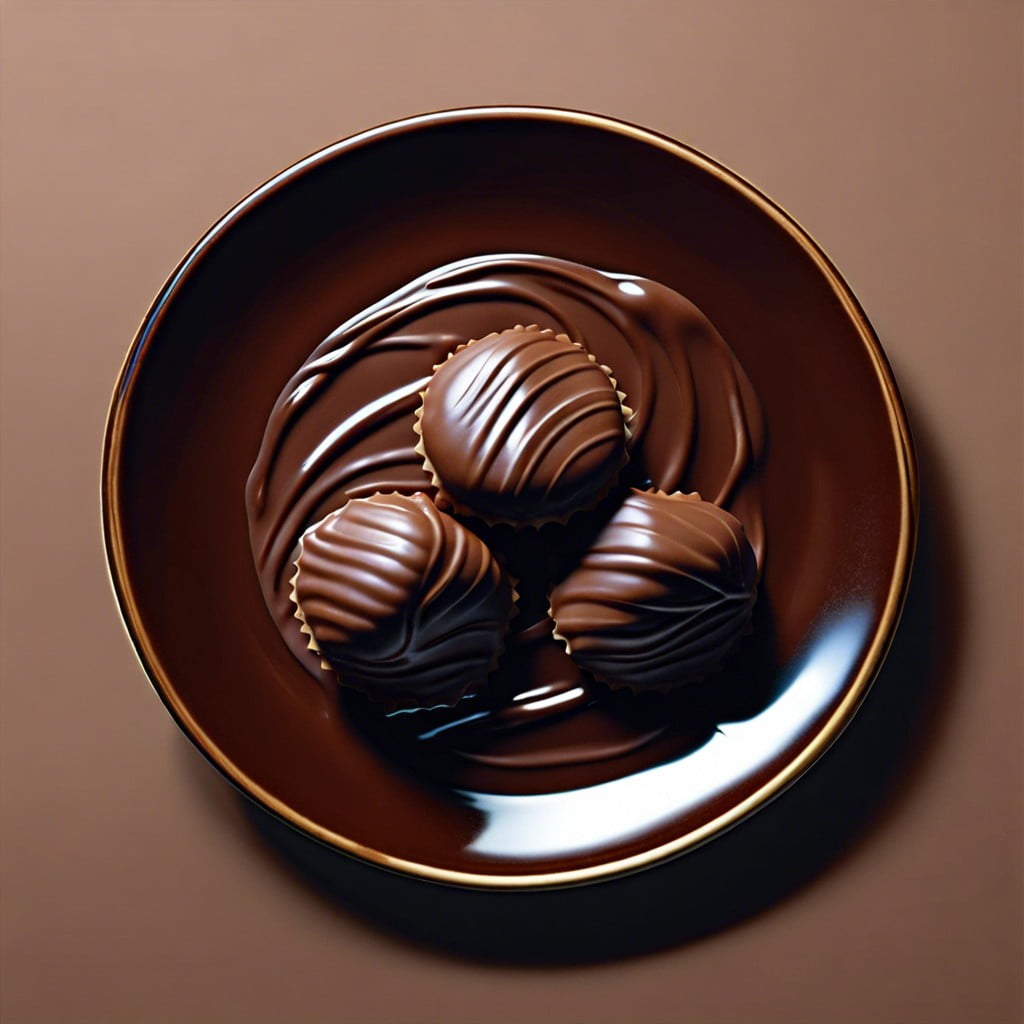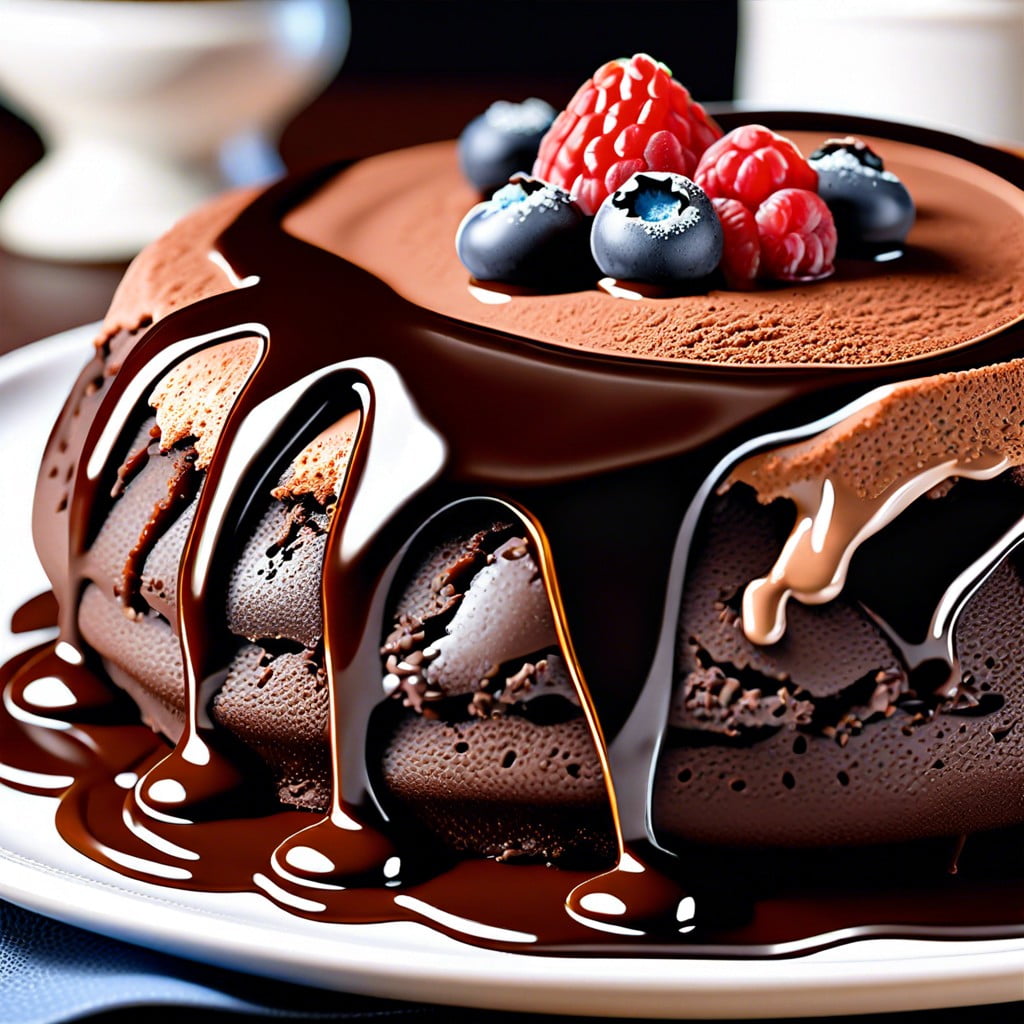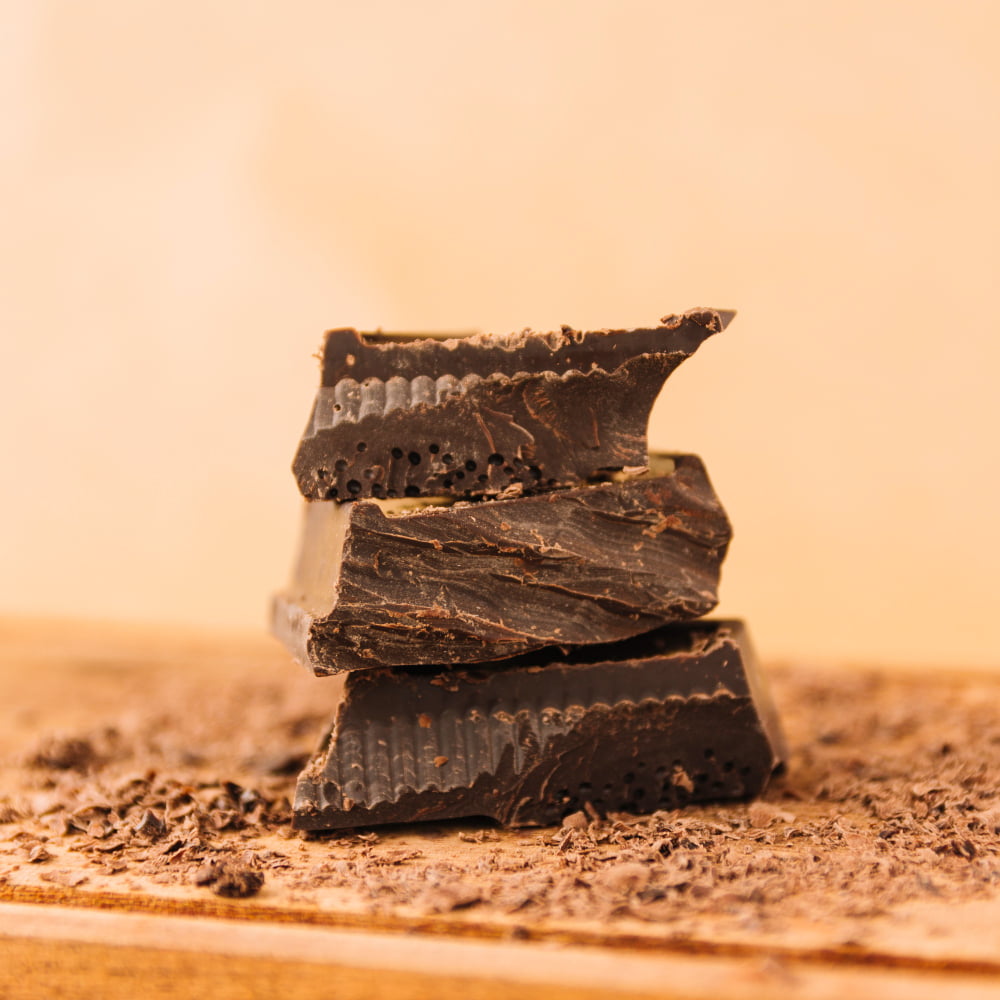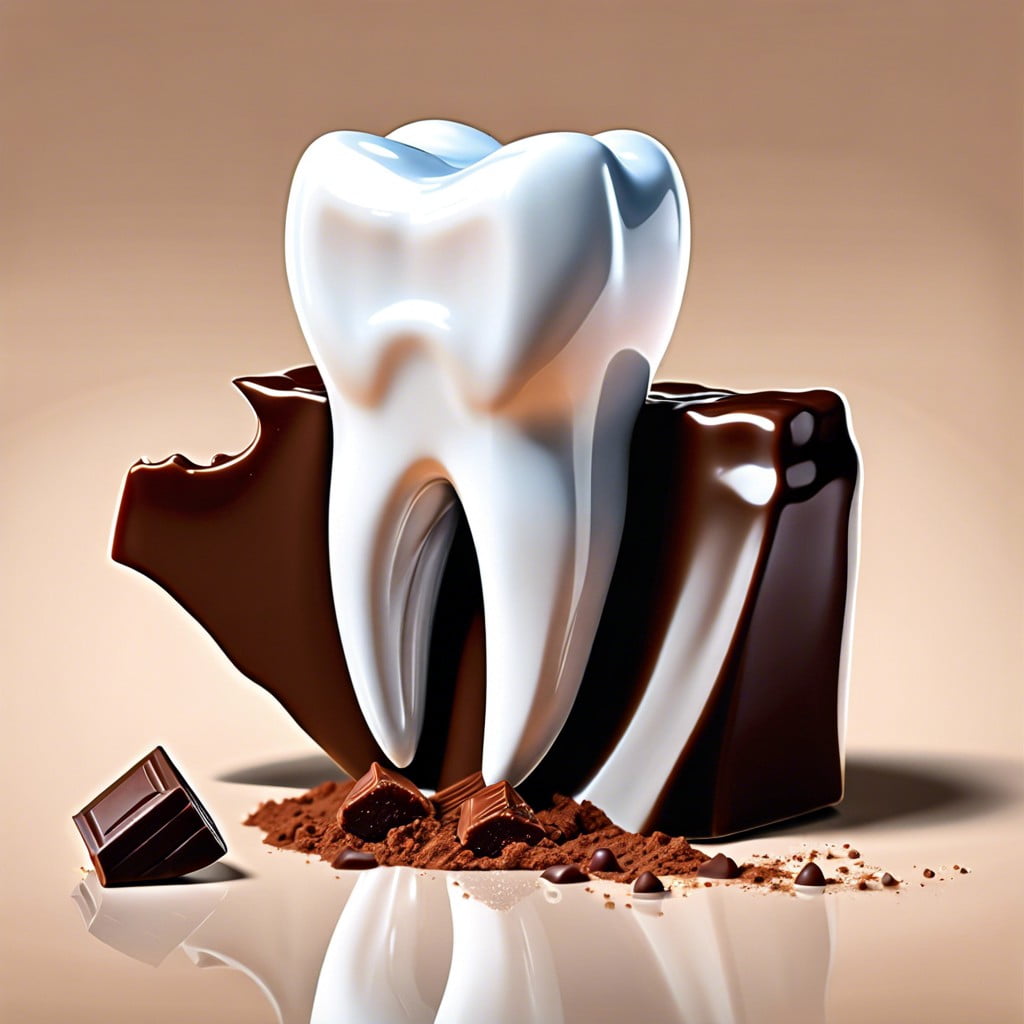Red velvet is not a distinct type of chocolate, but rather a flavor achieved by adding cocoa powder and red food coloring to cake batter.
Key takeaways:
- Red velvet is not a distinct type of chocolate.
- Red velvet cake gets its color from cocoa powder and food coloring.
- Red velvet’s flavor is a balance of vanilla and chocolate.
- Cocoa powder plays a supporting role in red velvet cake.
- Red velvet is not a full-blown chocolate cake; it has a subtle cocoa flavor.
Inside
Definition of Red Velvet Cake

Wrapped in its signature scarlet hue, red velvet cake offers a distinct taste that waltzes on the palate, blending hints of chocolate with a buttermilk tang and a whiff of vanilla. It’s a symphony of flavors, dressed in a vibrant, deep-red crumb—the result of either natural or food dye-induced coloring. This confection typically pairs with a luscious cream cheese frosting, creating a harmony of sweet and tangy notes. Its smooth texture contributes to the cake’s sought-after reputation at gatherings, serving as a visually striking centerpiece that promises a decadent experience. Despite its current staple status at dessert tables, its exact chocolate content casts a mystery that invites further exploration.
Origins of Red Velvet Cake Coloration
Dive into the past, and you’ll find red velvet’s hue was once a happy accident. Beetroot juices, used during the Great Depression, lent the cake its signature color while keeping costs down. Fast forward to today, and most bakers reach for red food coloring to achieve that vibrant shade. But wait—there’s a plot twist from the 1950s. A certain food dye company saw an opportunity to market their product, using the cake’s popularity to their advantage. They started promoting red food coloring through red velvet cake recipes, leading to the deep red we know and crave now. The rest, as they say, is baking history.
Comparison of Red Velvet and Chocolate Flavors
Red velvet’s flavor stands in its own class, playing a coy game between vanilla and chocolate. Its cocoa notes are like a whisper, subtle and smooth compared to the bold shout of a rich chocolate cake. Now, let’s roll up our sleeves and break it down:
- Red velvet carries a tangy kick, thanks to the buttermilk and a hint of vinegar often used in recipes. Chocolate cake, on the other hand, lacks this acidic melody.
- While red velvet has just enough cocoa to contribute a hint of chocolatey depth, it’s the vanilla and butter that often lead the charge on your taste buds.
- Contrary to an all-out chocolate cake, which dives deep into the fudgy, rich territory, red velvet keeps things light and airy, with a crumb that’s tender and velvety.
Imagine red velvet as the milder cousin arriving at the family reunion. It’s familiar yet distinct, with a sweet charm that chocolate cake might overshadow at the dessert table.
The Role of Cocoa in Red Velvet Cake
Cocoa powder plays a quintessential supporting role in red velvet cake. It’s the subtle background artist that adds depth to the overall flavor profile. Think of it as the bassist in a rock band—not always prominent, but essential for the full-bodied taste. Traditionally, only a modest amount was used, less than in a typical chocolate cake. This contributes to a nuanced chocolate hint rather than an overwhelming chocolate punch.
The natural acidity of cocoa harmonizes with the buttermilk and vinegar traditionally found in red velvet recipes, helping to achieve that distinctive, tender crumb. It’s part of the chemical tango that makes the cake supremely moist and fluffy. Moreover, the reaction with the baking soda gives rise to that tender texture we all crave.
Interestingly, when red velvet first danced onto the scene, the cocoa used contained anthocyanins, which react to acids by turning red. This added a reddish hue to the cake without the need for food coloring. Modern cocoa processing, called ‘Dutch processing,’ strips cocoa of these pigments, hence the reliance on additional colorants to achieve that iconic red velvet vibrancy.
So, while cocoa is essential to red velvet cake, its role is more about complex flavors and chemistry than color, fitting in the mix to ensure every bite sings with a rich and indulgent, yet distinctively different, melody.
Red Velvet Cake: Chocolate or Not?
Let’s cut to the chase – red velvet cake does flirt with chocolate, but it’s not a full-blown chocolate cake. The dance between the two lies in the fact that red velvet has just enough cocoa powder to make it intriguing. Think of it as a whisper rather than a shout of chocolate flavor that complements its tangy buttermilk and vanilla counterparts.
The real distinguishing character comes from the reaction between the cocoa powder and buttermilk, which provides a subtle richness often amplified by a hint of vinegar. This combination gives red velvet its signature velvet texture, not to mention a touch of sass that sets it apart from other cakes.
So, if your taste buds are tuned to the rich, deep tones of a classic chocolate cake, red velvet might just leave you playing the guessing game. It holds its own, with just a backdrop of cocoa, letting the vibrant red hue take center stage.




